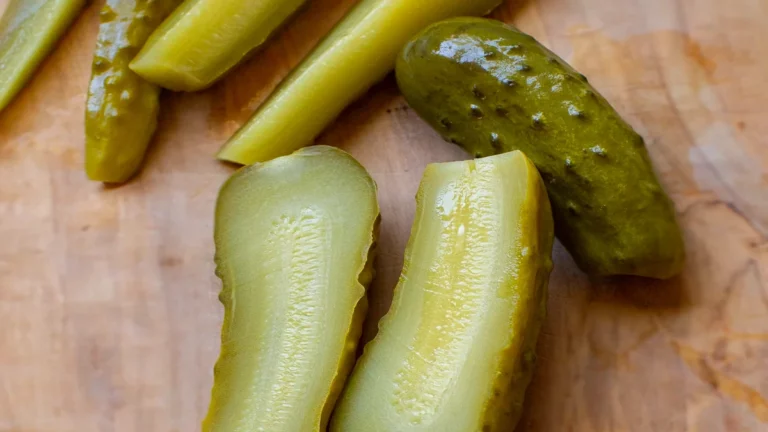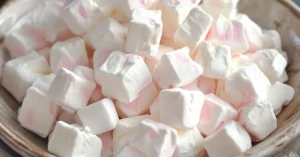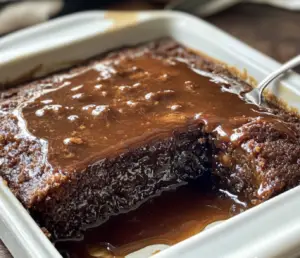In the vast and flavorful world of culinary delights, pickles stand out as a testament to the art of preservation and taste enhancement. From the crunch of a freshly opened jar to the tangy zest that complements countless dishes, pickles have transcended simple cuisine into a cultural phenomenon. Yet, a debate as old as time persists within this realm: the difference between sour pickles and new pickles. This article embarks on a journey to explore this pickle dichotomy, unraveling the mysteries behind their tastes, textures, and traditions. By delving into the science of pickling and its cultural significance and even guiding you through making your own, we aim to inform and inspire a deeper appreciation for these culinary treasures. So, buckle up; we’re about to dive into a world where cucumbers are more than just a salad ingredient—they’re a canvas for gastronomic exploration.

Difference Between Sour and new Pickles
Introduction to Pickles
Pickling, the ancient art of preserving foods, has roots stretching back to civilization’s dawn. This method, originally devised as a necessity to extend the shelf life of perishables, has evolved into a culinary craft celebrated worldwide. At its core, pickling involves submerging fruits, vegetables, or even meats in vinegar or salt brine, allowing them to undergo a magical transformation. The result? A delightful array of pickled goods, each with its unique flavor profile, ready to tantalize your taste buds.
Types of Pickles
In the pickle family, two members often spark curiosity and confusion: sour pickles and new pickles. Though they share the same lineage, their paths diverge in taste, texture, and preparation methods, offering distinct experiences to the discerning palate.
- Sour Pickles: Embarking on a journey through time, sour pickles undergo a fermentation process in a salt brine. This method preserves and imbues them with a tangy flavor and crunchy texture. This process, relying on the natural lacto-fermentation from bacteria, transforms the humble cucumber into a sour pickle, a staple in many cultures’ cuisines.
- New Pickles: On the flip side, new pickles, often called quick pickles, take a shortcut to flavor town. By marinating fresh cucumbers in a vinegar-based solution, often with a dash of sugar and spices, these pickles are ready to eat quickly. Though they lack the fermented depth of their sour counterparts, new pickles offer a crisp, refreshing taste that’s hard to resist.
As we peel back the layers of this pickle puzzle, we’ll explore the differences that set these two apart and the shared heritage that binds them. From the briny depths of sour pickles to the zesty snap of new ones, join us on this flavorful voyage to discover the essence of pickled perfection.
Understanding Sour Pickles
What Are Sour Pickles?
Sour pickles, a name that evokes a sense of curiosity and perhaps a bit of intrigue, are more than just a tangy treat. These pickles result from a meticulous fermentation process, where cucumbers bathe in a salt brine for weeks, sometimes months, transforming under the watchful eyes of lactobacilli. These beneficial bacteria are the unsung heroes, turning simple cucumbers into crunchy, flavorful delights that pack a punch with every bite. Unlike their quick-pickled cousins, sour pickles are a testament to patience, embodying the adage that good things come to those who wait.
Varieties of Sour Pickles
Diving deeper into the world of sour pickles, we encounter two main characters: half-sour and fully sour pickles. The distinction between them lies in their fermentation journey.
- Half Sour Pickles: These are the youngsters of the sour pickle family, pulled from their briny bath early in their transformation. Fermented for a shorter period, they retain a green hue, a crisp texture, and a milder taste. Half sours are a perfect gateway for those new to fermented pickles, offering a gentle introduction to the complexity of flavors that fermentation can bring.
- Fully Sour Pickles: The elders of the pickle world, fully sour pickles, have basked in their salty spa twice as long as their half-sour siblings. This extended fermentation period allows for a deeper, more pronounced sourness, a robust flavor that can only be achieved through time. Their texture, slightly softer than half sours, carries the weight of their flavor with dignity, making them a favorite among pickle aficionados.
Health Benefits and Nutritional Information
But sour pickles aren’t just a feast for the taste buds and a boon for your health. The fermentation process not only preserves the cucumbers but also enriches them with probiotics, those friendly bacteria that play a crucial role in maintaining a healthy gut microbiome. These microscopic benefactors aid digestion, boost immunity, and may even improve mental health.
Nutritionally, sour pickles are low in calories but high in vitamins and minerals. Rich in vitamin K and antioxidants, they offer a nutritional punch that belies their humble origins. However, it’s worth noting that their brine can be high in sodium, so those monitoring their salt intake should enjoy them in moderation.
As we unravel the mysteries of sour pickles, it becomes clear that these tangy treasures are more than just a condiment. They’re a link to our past, a testament to the power of fermentation, and a vibrant part of culinary traditions around the globe. Whether you’re a seasoned pickle enthusiast or a curious newcomer, sour pickles are ripe for exploration.
Exploring New Pickles
What Are New Pickles?
New pickles, often called quick pickles or refrigerator pickles, represent the fast track in the pickling world. Unlike their sour counterparts, which rely on the slow dance of fermentation, new pickles are made by immersing cucumbers in a vinegar-based solution, often with a sprinkle of sugar and a bouquet of spices. This method, quick and straightforward, can transform cucumbers into pickles in hours or days, offering almost instant gratification to the pickle craving.
Taste and Texture Comparison
The taste of new pickles is markedly different from that of sour pickles. Where sour pickles are deep and complex, fresh pickles are bright and zesty. The vinegar imparts a tangy flavor and preserves the cucumber’s crispness, resulting in a pickle that’s both refreshing and satisfying to bite into. Adding spices, from classic dill to adventurous blends, allows for endless flavor experimentation, making new pickles a versatile player in the culinary field.
Culinary Uses of New Pickles
New pickles shine in their ability to complement a wide range of dishes. Their crisp texture and tangy taste make them an ideal addition to sandwiches, burgers, and salads, where they add a refreshing crunch and a burst of flavor. But their versatility doesn’t stop there; chopped new pickles can be a zesty ingredient in potato salad, a tangy topping for tacos, or a bright accent in a cold pasta dish.
Moreover, the quick pickling process opens up possibilities beyond cucumbers. Vegetables like carrots, radishes, and onions can be transformed into quick pickles, each bringing its unique flavor profile. This method encourages culinary creativity, inviting cooks to experiment with different vegetables and spice combinations to create their pickle masterpieces.
With their ease of preparation and bright, tangy flavors, new pickles offer a delightful contrast to the more complex sour pickles. Whether you’re a pickle purist or an adventurous eater, the world of fresh pickles invites you to explore the fresher, quicker side of pickling, where the only limit is your imagination.
Comparative Analysis
Regarding taste and texture, sour and new pickles sit on opposite ends of the spectrum, each bringing unique characteristics to the table. With their fermentation-based creation process, sour pickles develop a complex, deep flavor profile rich in umami and tanginess. This complexity directly results from the lactic acid bacteria at work, imparting a distinctively crunchy yet slightly softer texture compared to their fresher counterparts.
On the other hand, new pickles maintain a bright, acidic tang primarily from the vinegar, with added spices contributing to their overall flavor. Their texture is notably crisp and snappy, a characteristic highly prized in quick pickles. This crispness makes them appealing as a refreshing or crunchy sandwich ingredient.
Health Benefits and Nutritional Value
Pickles’ health benefits and nutritional value can vary significantly between sour and new varieties, primarily due to their preparation methods. Sour pickles, fermented naturally, are a rich source of probiotics, beneficial bacteria that support gut health. These pickles can be part of a diet that promotes digestive wellness and boosts the immune system. However, it’s essential to consider their sodium content, which can be high due to the brine used in fermentation.
New pickles, while not a source of probiotics due to their lack of fermentation, can still offer nutritional benefits. They retain many vitamins and minerals in fresh cucumbers, such as vitamin K and antioxidants. The vinegar in new pickles may also have health benefits, including blood sugar regulation. Like sour pickles, they can be high in sodium, so moderation is key.
Culinary Applications
In culinary applications, sour and new pickles offer versatility, though they may be used differently based on flavor profiles and textures. With their complex flavors, sour pickles are often enjoyed as a snack or used to add depth to dishes like stews, sandwiches, and charcuterie boards. Their unique taste can enhance the flavors of a meal, adding a layer of complexity that’s hard to replicate with other ingredients.
With their quick preparation and bright flavors, new pickles are excellent for adding a fresh, tangy crunch to dishes. They’re commonly used in salads, burgers, and other dishes where a crisp, acidic element is desired. Their ease of preparation also makes them ideal for home cooks looking to add a homemade touch to their meals without the commitment required for fermented pickles.
In conclusion, while sour and new pickles differ in taste, texture, health benefits, and culinary uses, both have their unique place in the food world. Whether you prefer the complex flavors of sour pickles or the fresh tanginess of new pickles, incorporating these versatile ingredients into your diet can add excitement and variety to your culinary creations.
FAQs
Can sour pickles be used as a substitute for new pickles in recipes?
Yes, sour pickles can be substituted for new pickles in most recipes, and vice versa, depending on personal taste preferences. However, it’s essential to consider the differences in flavor and texture. Sour pickles bring a deeper, more fermented taste and a slightly softer texture, which can significantly alter the flavor profile of a dish. If the recipe calls for the crisp, fresh tang of new pickles, using sour pickles might not achieve the desired result. Consider adjusting the quantity to suit the dish’s flavor balance when substituting.
How long do sour and new pickles last?
Thanks to the fermentation process, sour pickles have a longer shelf life. When stored properly in a refrigerator, they can last for several months up to a year. It’s crucial to ensure the pickles are fully submerged in their brine to prevent spoilage. New pickles, on the other hand, have a shorter shelf life due to their quick pickling process. They typically last for a few weeks to a month when refrigerated. Always check for signs of spoilage, such as off odors or mold, before consuming.
Are there any health risks associated with consuming too many pickles?
While pickles can be a healthy addition to your diet, consuming them in large quantities may lead to health concerns, primarily due to their high sodium content. Excessive sodium intake is linked to increased blood pressure and a higher risk of cardiovascular diseases. Additionally, pickles made with a lot of vinegar or sugar can contribute to dietary imbalances. It’s best to enjoy pickles as part of a balanced diet, considering them more as a flavorful accent than the main component of your meals.
How to make pickles at home ?
Making sour pickles involves a simple fermentation process. Start by choosing fresh cucumbers and washing them well. Prepare a brine solution by dissolving salt in water, a ratio of 2 tablespoons of salt to 4 cups of water is usually good. You can add vinegar for more flavor, enter it here Ted’s Montana Grill Pickles Recipe: Crisp & Flavorful Homemade Delights
The Science Behind Pickling
The magic of pickling lies in its chemistry. Whether it’s the slow fermentation of sour pickles or the quick acidification of new pickles, they involve fascinating chemical reactions. Fermentation, the heart of lousy pickle production, relies on converting cucumbers’ natural sugars into lactic acid by beneficial bacteria. This preserves the cucumbers and creates complex flavors and beneficial probiotics.
In contrast, the quick pickling process involves acetic acid in vinegar, altering the cucumber’s environment and making it inhospitable to harmful bacteria. This acidification process preserves the cucumbers while imparting a tangy flavor. Both methods effectively extend the shelf life of cucumbers, transforming them into delicious pickles with distinct tastes and textures.
The Role of Salt and Vinegar
Salt and vinegar are not just flavor enhancers in pickling but essential preservatives. Salt, critical in fermenting sour pickles, draws out water from cucumbers through osmosis, creating an environment where beneficial bacteria thrive and harmful ones cannot. This salty brine is where the magic of fermentation happens, making sour pickles rich in flavor and probiotics.
Vinegar, used in making new pickles, is a potent preservative due to its acetic acid content. It lowers the pH of the solution, effectively pickling and preserving the cucumbers in a matter of days. The choice of vinegar can also add a variety of flavors, from the sharpness of white vinegar to the sweet notes of apple cider vinegar.
Understanding the science behind pickling demystifies the process and highlights the ingenuity of this ancient preservation method. Whether you’re a fan of the slow-fermented sour pickles or the quick and tangy new pickles, the chemistry of pickling ensures that there’s a pickle for every palate.




